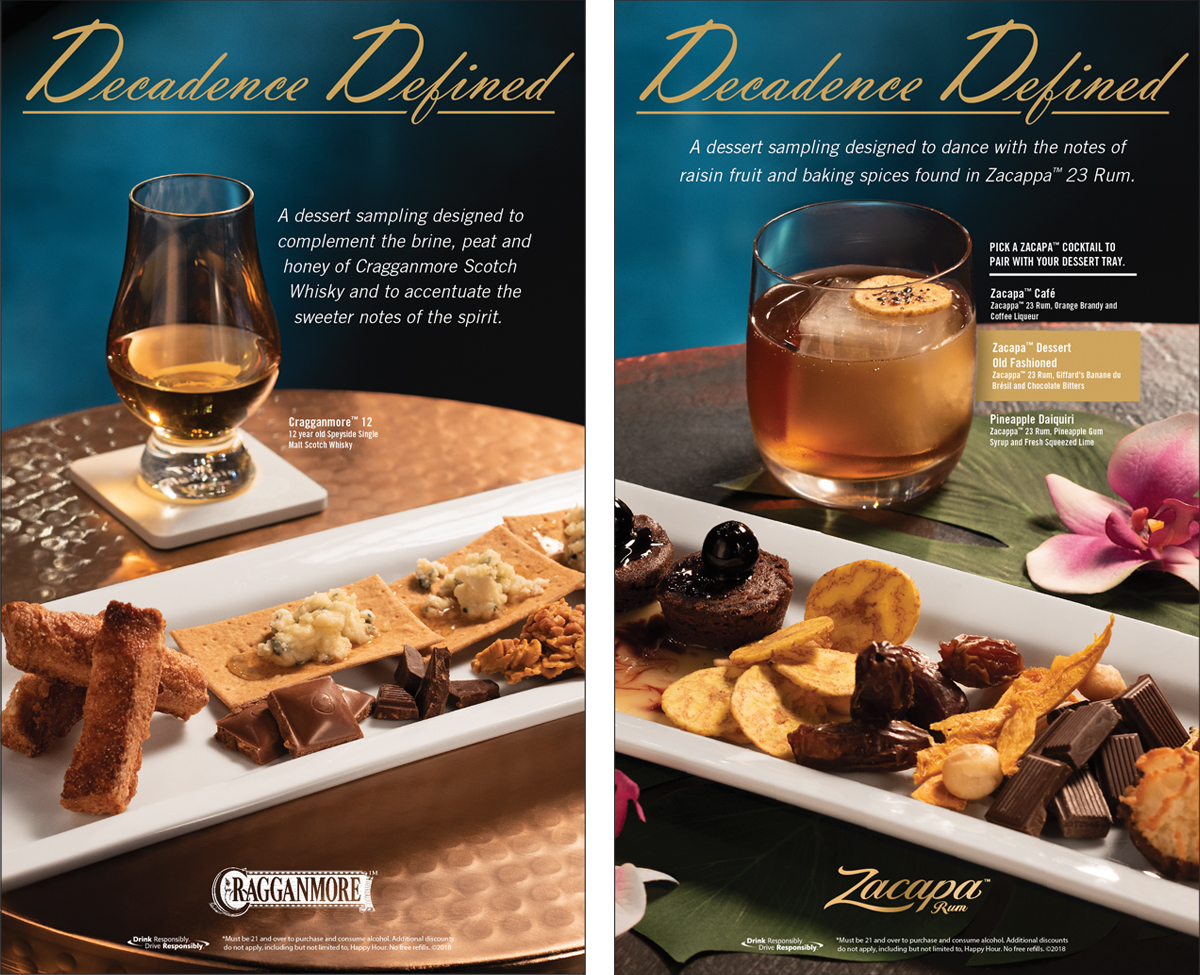
We developed a dessert charcuterie as a perfect complement for a spirit tasting.
Ingredients were chosen to complement the brine, peat and honey qualities and play up the sweeter notes of the spirits. Barrel-aged spirits like whiskey or aged rum echo the natural vanilla and caramel richness found in many chocolates. Tropical fruits and nuts also enhance the flavor profile in these spirits.
Age is another big factor with respect to pairings. The more time a spirit spends in a charred new oak barrel, the more you’ll taste primary flavors like grain, fruit and flowers.
Now that we have our culinary companions for our spirits; here are some tips to make the most of a tasting.
Look Both Ways:
Even clear spirits may leave “legs on the glass” indicating a viscosity and giving you a sense of the mouthfeel. Also pay attention to clarity and even bubbles, which aren’t a result of carbonation but agitation, and occur only in higher (50% ABV and above) spirits. As for color, darker spirits have a range of colors, and lighter doesn’t always mean less flavor.
Go Nose First:
Aromatics play a huge part in taste, and the aromatics of a spirit can be especially volatile, ready to leap out of the glass and into your nasal passageway if treated correctly.
Sip and Spit:
Spirits aren’t generally part of what your palate encounters on a regular basis. So, it’s good to prime your palate by sipping a little of the spirit, swishing it around, and spitting out the remainder.

